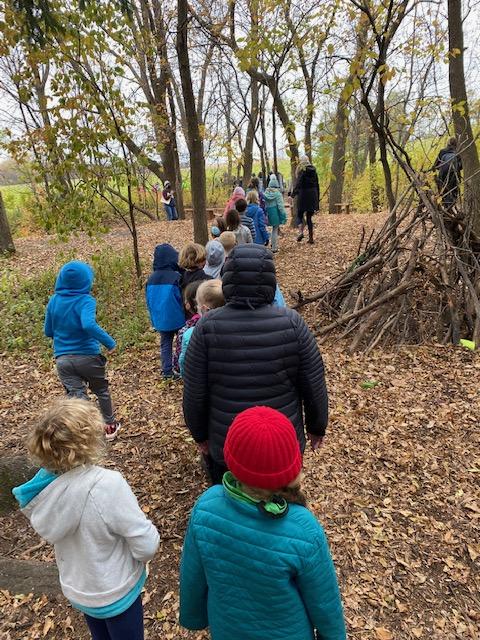- This topic has 1 reply, 2 voices, and was last updated 3 years, 6 months ago by
Lauren Bundy.
-
AuthorPosts
-
-
October 29, 2021 at 12:22 am #8524
Trina Eichel
ParticipantI have observed many examples of reinforcers during my time at Prairie Creek. Some of these are intentional and used to reinforce good behavior or extinguish unwanted behavior while others are unintentional and may be detrimental in the long run. For example, Molly does a really amazing job of intentionally using positive reinforcements when she notices students working hard or if they answer a question correctly. While I was there on Wednesday, the students did shares. These shares are a time when students (whoever is in work crew that day) are able to share either a story or an object with the class who then respond with their comments and questions. Molly makes an effort to respond to the student’s shares as well which positively reinforces this behavior that she wants to continue.
In contrast, I have seen Molly use a couple of different strategies to extinguish unwanted behavior. This week, students had just gotten off of a four-day break. Students were still adjusting back into the routine of school when I went in on Wednesday and were a bit more rowdy and distracted than usual. This made it difficult for Molly to maintain their focus on lessons. In order to extinguish unwanted behavior such as talking with a classmate instead of paying attention, Molly “punished” students who were misbehaving by calling them out and telling them that they were disrupting other students’ learning. By using a firm tone and bringing up that they are influencing others’ learning, Molly “punishes” those students by making them feel guilty. This resulted in the student paying attention and being quiet rather than distracting the class.
These last two reinforcers are very reminiscent of operational learning and Skinnerian behaviorism. Students are given a reward or punishment that then influences their behavior. It seems to me that behaviorism is very present in the classroom and is very effective in redirecting student learning and behavior to be as the teacher desires.
As well as many examples of behaviorism, I also observed some instances of cognitive learning in the classroom. One example of cognitive learning that I helped facilitate in my time at Prairie Creek on Wednesday was asking students questions about what they were doing and why. We were sorting garbage, compost, and recycling on the first day of their waste unit and I kept asking the group I was working with why they thought something went in a specific pile and so forth. By asking these questions, I got them to think about what they were doing on a deeper level. By the end, they had a more developed idea of what it means for something to be recyclable or not.

I believe that I am a behaviorist at heart. I think that student learning is heavily impacted by the reinforcement that they receive. If a student is consistently praised for their hard work, whether through good grades or by teacher support, they will continue to work hard and succeed in school. Additionally, if a student is exhibiting unwanted behaviors in the classroom, teachers can use punishment or rewards to extinguish these behaviors. I do think that cognitive approaches to learning are important, but I think behaviorism is easier to observe in the classroom because it is not based in the brain and instead is visible in the behaviors of the students.
I wanted to point out a super relevant and interesting progressive education model activity that Molly did when we were there last Wednesday. It was a super rainy and stormy day and as we were settling back into the classroom before the all-school gathering it started to thunder and rain. Molly noticed that the students were becoming distracted by the rain and were no longer paying attention to her lesson. So, she decided to switch it up. She gave students three options: they could sit quietly in their seats and observe the rain out the window, they could draw the rain, or they could write about it. She then released them and all of the students became super engaged in this new activity. Instead of redirecting student attention away from the thing they were interested in, Molly made the thing they were interested in into a lesson. I thought that this was an incredible way to engage with her student’s interests and allow them to explore them further rather than ignoring them and forcing them to focus on the lesson she had planned.

-
October 29, 2021 at 6:03 pm #8530
Lauren Bundy
ParticipantI wish I could see some of the work that the students produced about the rain! Allowing students to interact with their surroundings in a way that feels meaningful to them seems like an activity that Piaget would appreciate. If only cognitive development were more visible in a classroom setting, because this activity seems like it would produce just that. On the other hand, I wonder how the observation/writing/drawing activity could be viewed through a behavioralist lens. Does it actually reward students for their distraction? If so, does that matter? A cognitivist probably wouldn’t think so, arguing instead that students’ interests are more important than plowing through a curriculum. But I do wonder if the two approaches to learning be in conflict in this example.
-
-
AuthorPosts
- You must be logged in to reply to this topic.
